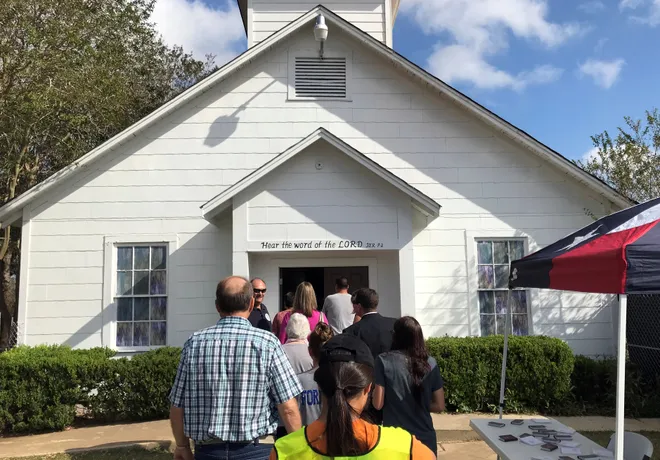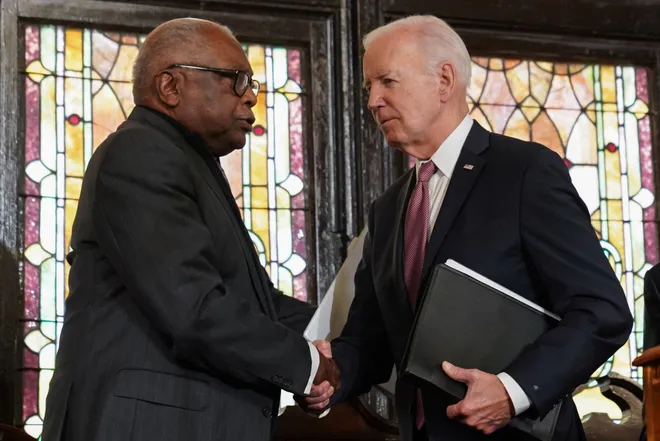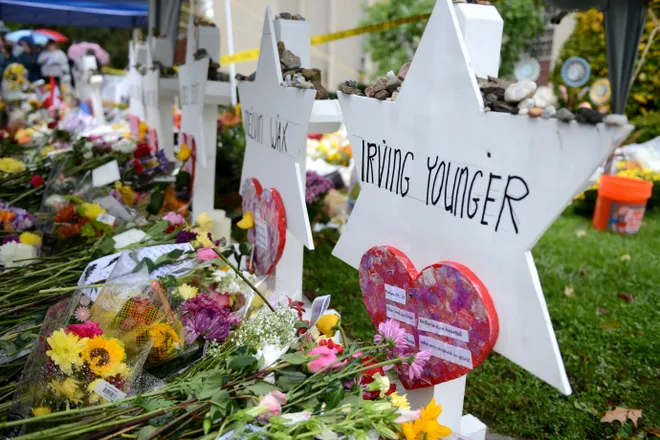Texas church demolished after mass shooting. How should congregations process tragedy?
After a gunman killed more than two dozen worshippers during a Texas church service in 2017, Terrie Smith created a special area in her yard so that when she looked across the street, the First Baptist Church would be framed with flowers.
On Monday, Smith watched with sadness as workers demolished the building where her friend Joann Ward and Ward’s two young daughters died. Though she wasn't a member of the congregation, Smith said she often visited the shuttered church grounds in the years after the shooting to honor her loved ones.
"It was just a way of feeling their spirits," said Smith. "In there, you would feel so comforted, you know, it was just an awesome feeling, a warm feeling."
The demolition came after a legal battle over the fate of the church, one of a growing number of religious sites across the country struck by deadly violence. In the wake of a mass shooting at a sanctuary, survivors, community members and religious leaders are often faced with difficult decisions about whether to reopen their doors to the world and how best to honor the lives of community members they've lost.
"For people who want to remember, it can be a positive, to have the physical space as a place to engage in deliberate, thoughtful recollection," said Jennifer Talarico, a professor of psychology at Lafayette College who studies how people remember personally experienced events. But there's an equally valid consideration for others, she said. "For people who don't want to be reminded because it is retraumatizing, having that physical building there serves as an unwelcome reminder."

What happened in Sutherland Springs?
After the mass shooting on Nov. 5, 2017, First Baptist Church filled the holes in its walls, repainted its interior and adorned its chairs with the names of the victims at the building the congregation constructed more than 50 years ago, according to court documents.
Construction started on a new church six months after the shooting, the Associated Press reported. And in 2021, church members voted to demolish the old building, but some community members filed a lawsuit saying they'd been unfairly denied the opportunity to vote.
A spokesperson for the church declined to comment and an attorney for the church did not respond to a request for comment. In court filings, the church's attorneys denied these allegations and called the building a “constant and very painful reminder," according to the AP.
"It was a beautiful memorial, and to see it go, it saddens everyone," said Smith, who lives nearby and is president of the Sutherland Springs Community Association.
Preserving remnants of a tragedy can offer meaning and opportunity to a community, experts say.
Paul Farber, director of Monument Lab, said the most important lesson to take from the conflict over the demolition of the church is the importance of understanding how a community is mourning. Preserving physical elements of a space where a great trauma has occurred can be an important part of a long-term healing process, he said.
"If you go in as an approach that we have to find a way to memorialize without the listening and reflecting on how people's grief is manifesting, you will short circuit that very concept that you are seeking to design," he said.
'Resilient' Mother Emmanuel reopened days after shooting
Just days after a white supremacist killed nine Black churchgoers at one of the oldest Black churches in the South, the historic Emanuel AME Church, also known as “Mother Emanuel" in Charleston, South Carolina, reopened for worship.
Michael Arad, the architect tasked with designing a memorial for the victims, recalled how shocked he was, during his first visit to the church's fellowship hall after the shooting, to see the places where bullet holes had been concealed.
"Having gotten to know people here over the last few years, it seems absolutely obvious to me that that's what would happen because they needed a place to come back together," he said. "It's always been an extended family, and where else would they come together but there?"
Emanuel AME Church historian Lee Bennett Jr. said in a 2021 interview that the church had experienced tragedy before and the doors always remained open and that did not change after the shooting on June 17, 2015. Speaking about the gunman who opened fire on congregants who welcomed him to a bible study, Bennett said, "You have not changed who we are at all. No one has. He certainly has not."
"We are resilient church and we’re going to be around for another 200 years," Bennett later added.

In the immediate aftermath of the attack, community members placed flowers outside the church to honor the victims. In the years since, the church and community have regularly held commemoration services.
Monuments were also created around Charleston to honor the victims, including nine wooden benches with the names of victims at a park near the church. A plaque at the front of the church also lists their names.
Nearly a decade after the shooting, the church is at work on an estimated $2.5 million renovation. Construction broke ground last summer on the memorial designed by Arad, who also designed the National September 11 Memorial at the World Trade Center. The memorial in Charleston, expected to open in spring 2025, will surround the church with a courtyard, a contemplation basin and eventually a survivor's garden.
"I think in many ways, what we are creating in the memorial courtyard is an outdoor church itself," Arad said. "It's a congregational space. It's a place, it's assembly, a place of worship and memory."
Demolished Tree of Life Synagogue to reopen with museum
After a gunman killed 11 worshippers in an antisemitic attack at the Tree of Life Synagogue on the Jewish sabbath on Oct. 27, 2018, it was clear the space was no longer sacred, according to Alan Hausman, president of the Tree of Life congregation. Some members of the congregation and loved ones of those killed felt strongly that the building, which opened in 1952, should be preserved. But after it held listening sessions with the community, the synagogue's leadership decided that would be an impossible undertaking.
According to Jewish tradition, anything in the sanctuary that touched the bodies of the victims is considered part of the body, so the bottoms of pews in the sanctuary had to be cut off, parts of the floor jackhammered out and pieces of drywall removed, Hausman said. All these items were then buried in graves in the congregations' cemeteries, he said.
"There was just no way we could reopen the building. People would walk along, they'd either be sitting in the same pew or walking up the steps where someone had expired," he said. "So it was determined pretty early on, (that) it had to be a mammoth remodel or rebuild of the building."
In January, crews began demolishing 80% of the facility in Pittsburgh's picturesque Squirrel Hill neighborhood. For Hausman, the most difficult part was witnessing the ark that held the Torah scrolls being removed from the chapel where many of the victims died.
He is hopeful about the thought and work Tree of Life put into honoring its slain congregants and simultaneously sad about the destruction of the place where so many family memories happened.
"It's exciting that we're moving forward," he said. "But at the same time, there were an awful lot of memories and life cycle events that occurred in there, so it was really tough seeing it happen."

Crews will rebuild a new, multimillion-dollar sanctuary, memorial garden and museum intended to highlight Jewish life and explore the roots of antisemitism. Family members of the victims and three congregations sat on the Memorialization Working Group that helped develop the designs, Hausman said.
The congregation's CEO Carole Zawatsky previously told USA TODAY the site is expected to reopen in about two years.
The new building will be a cohesive, state-of-the-art structure designed with security in mind, Hausman said. He said he hopes "it'll become a community asset, rather than just a synagogue."
Hausman said he's kept in touch with the survivors of other mass shootings including First Baptist Church's former Pastor Frank Pomeroy and Mother Emanuel's Rev. Eric Manning. He said these leaders and the Tree of Life rabbi learned from and leaned on one another as they navigated the rebuilding process.
"A lot of the feelings are the same, a lot of the frustrations the same, a lot of the anger is the same," he said. "But each event has its unique challenges and circumstances. It's a club that you just don't want to have anyone else be part of."
What's next for Sutherland Springs?
In Sutherland Springs, church bells ring throughout the community on the anniversary of the tragedy and a "beautiful memorial wall" has been erected at the new church, according to Smith. But when she looks out the window, all she can see is the absence of the old church.
"I'm hoping that they do build a beautiful memorial to replace what they demolished and that it'll bring joy to everybody again," she said.
Contributing: Krystal Nurse, Deborah Barfield Berry USA TODAY
Disclaimer: The copyright of this article belongs to the original author. Reposting this article is solely for the purpose of information dissemination and does not constitute any investment advice. If there is any infringement, please contact us immediately. We will make corrections or deletions as necessary. Thank you.




